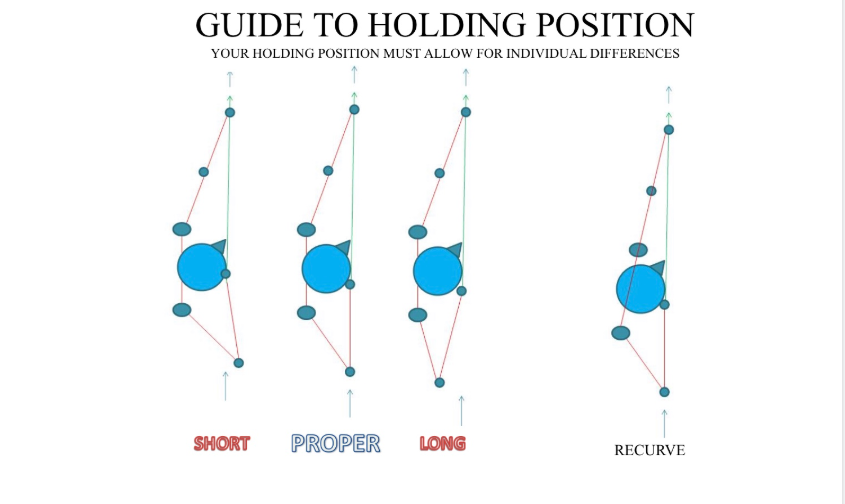Are you one of the countless archers that struggles with target panic? Do you ever wonder why you punch the trigger? Don’t worry. You’re not alone. Target panic is a mental battle that attacks most every archer at one point or another. It can be brutal, but you can overcome it. The following information will show you what it looks like and how it affects the shooter.
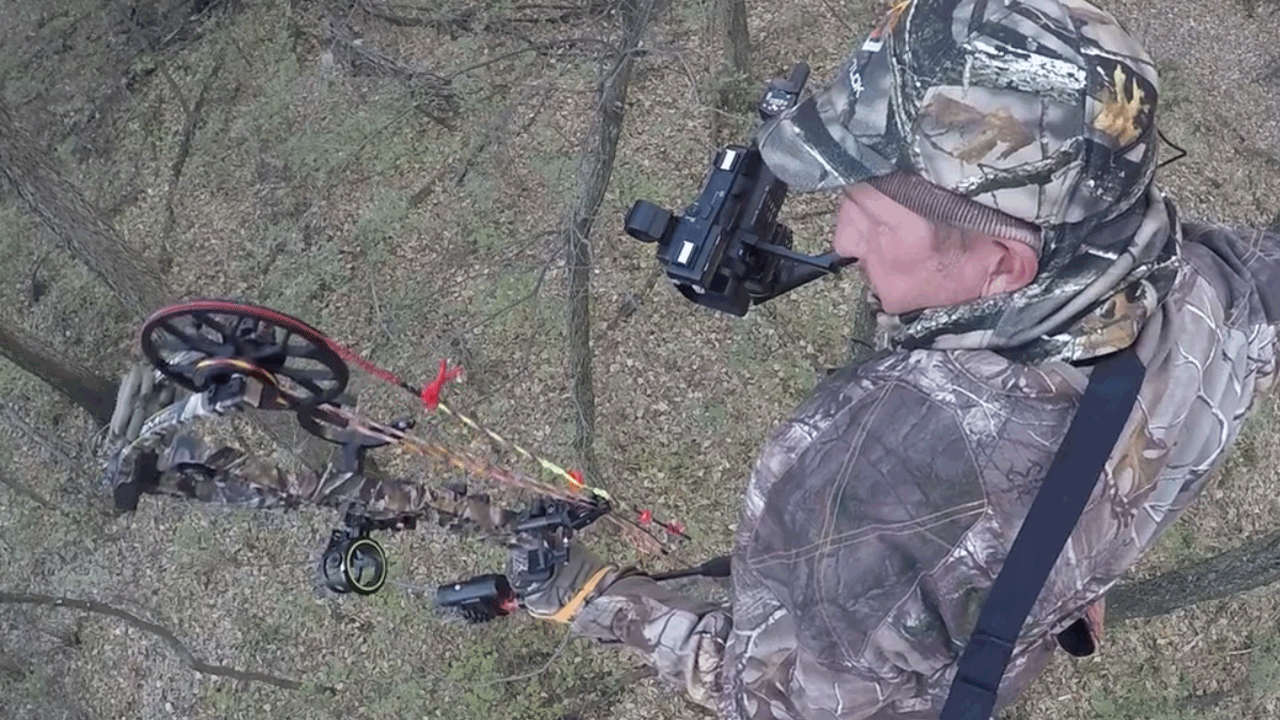
Whether in the treestand or on the shooting line, target panic can be a serious issue.
In Season 8 Episode # 26 at 25:45 Johnny Herrmann came to head with dreaded target panic on his Kansas hunt. Johnny is a Bowhunt or Die web show icon, but over the years the “TP” has gotten progressively worse for him. While he came out of that hunt with an awesome Kansas buck, the process of getting there was difficult. I recall messaging Johnny shortly after that episode and asking him if he would be interested in some help. As part of the team from Bowhunting.com, I was eager to discuss what I saw in that short clip of his shot on that buck. If there is one thing I know, once the cycle of target panic starts, it is very difficult to stop. Johnny worked diligently in the off season making adjustments to his draw length, doing shooting drills, and working through his issues. Fast forward to Herrmann’s successful turkey hunt of April 2019 and we saw an amazing difference between the episodes.
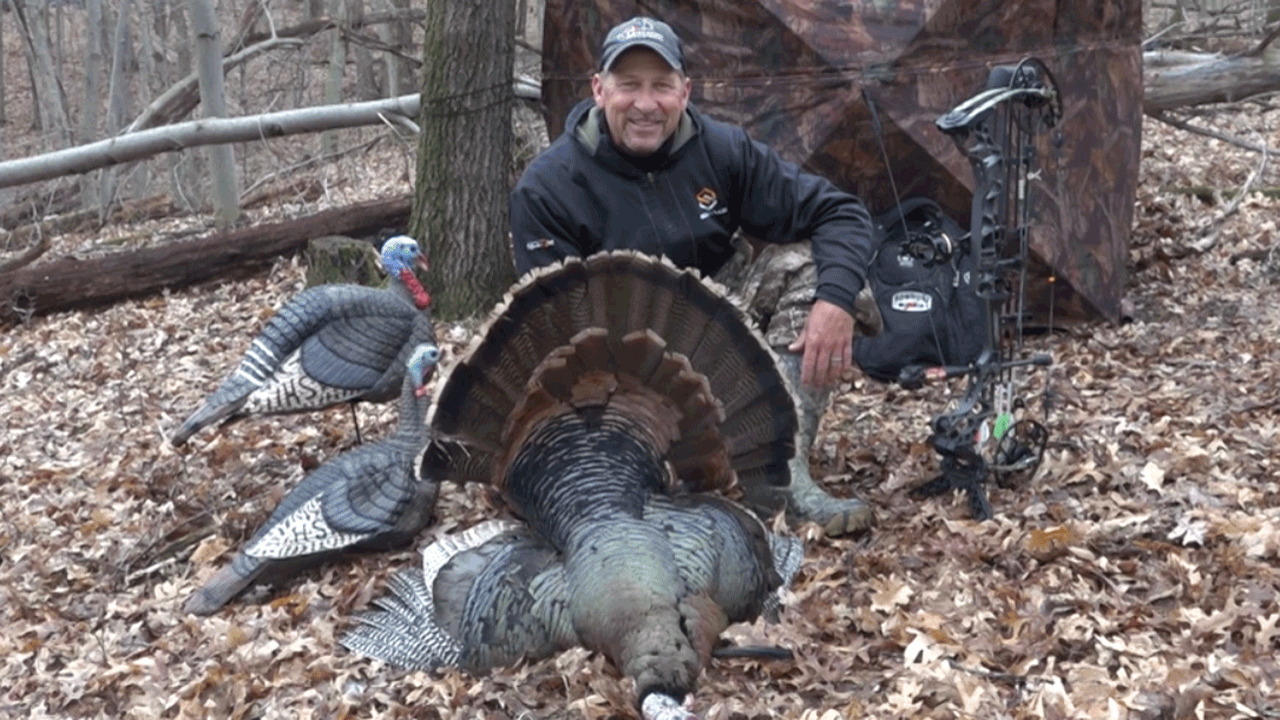
Johnny Herrmann has been working on beating target panic over the last year. He was able to hunt with greater confidence this past spring during turkey season.
Why Do You Punch The Trigger?
The quick and precise answer is, you have a mental injury that allows you to skip the transfer to hold part of the shooting process. However, learning about the shot process and understanding the dynamics behind what we are supposed to do, are easier said than done. When we don’t learn each step of that process our natural tendency is to take short cuts – enter target panic.
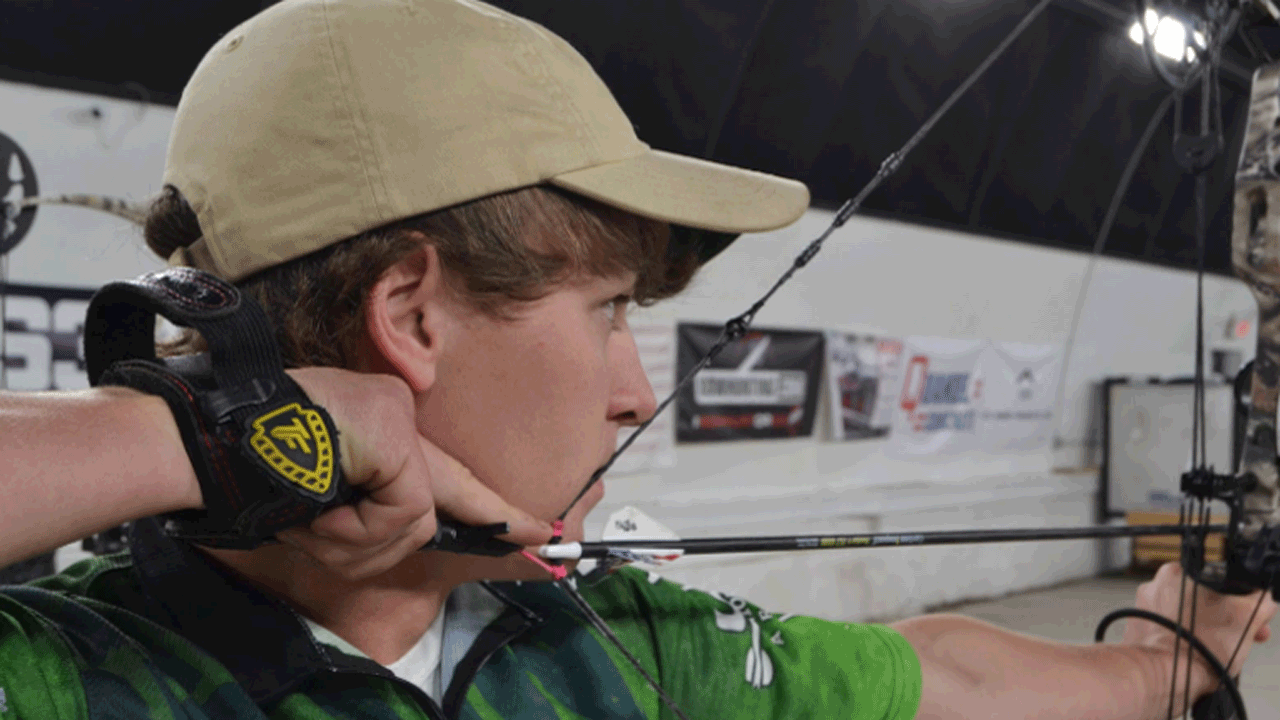
What does target panic look like in our shot routine?
So what are some of the symptoms of the mental injury?
- The bow appears to become very heavy for the archer.
- Pin gets stuck at the bottom or anywhere off the desired target area.
- “Drive by shot” – we slam the release as the pin floats by the desired target area.
- The archer feels as though they lock up at full draw.
- The inability to come to anchor at full draw without smashing the trigger or thumb button.
- Punching the trigger.
- Inability to hold solid groups at longer distances.
- Collapsing.
- Inability to touch the trigger or thumb button at full draw while aiming.
- Flinching.
- Uncontrollable shaking or possibly inability to lift the pin into the center of the desired aiming spot or target.
- Excessive movement coming into anchor.
These are just a few of the symptoms that may manifest themselves for a bowhunter using a compound bow. Likewise, some of them transfer over to traditional hunters as well. What seems to be a common theme is, we shoot our archery equipment with the purpose of hitting in “the area the size of the vitals” on an animal, but we don’t focus on the process that achieves that goal. We skip steps in the shot cycle that result in rushed and inaccurate shots that make us miserable and frustrated.
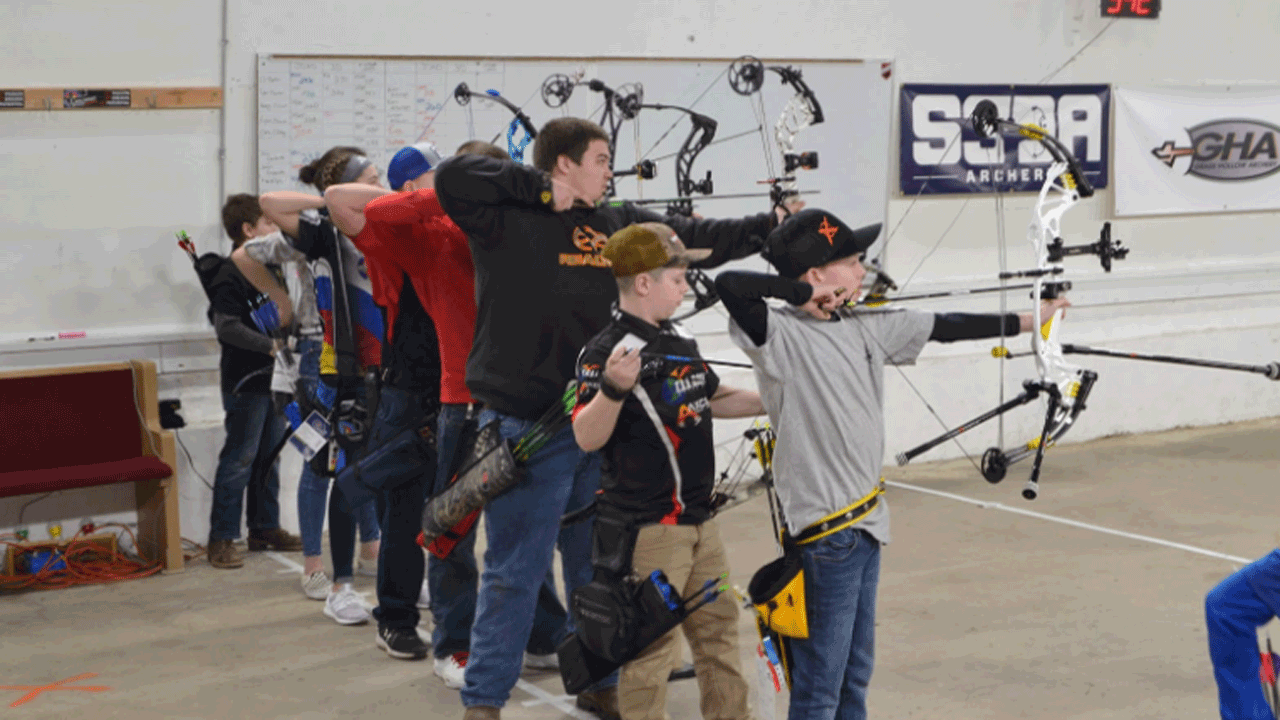
Does the pressure from other shooters around you bring on target panic?
What are the steps of the shot cycle?
According to the USA Archery National Training System for compound archery the following steps for shooting a compound are the following.
- STANCE
- NOCKING
- SET BOW-HAND / RELEASE-HAND (HOOK RELEASE TO D-LOOP)
- POSTURE/MINDSET
- SET-UP (RAISE)
- DRAW TO LOAD
- ANCHOR
- TRANSFER TO HOLD
- AIM…{ EXPAND/CONTRACT }…AIM
- RELEASE & FOLLOW-THRU
- FEEDBACK
(LINDA BECK & LARRY WISE, 2017)
So What Step Are We Missing?
When we have target panic, it’s sort of like replacing the timing belt in your car. Say our car works fine, but all of a sudden the timing goes bad in our vehicle and we start to see symptoms that, depending on severity, can disable the car all together. There is nothing wrong with the rest of the car. We just have to replace the timing belt and it will run fine as long as nothing else has gone bad in the meantime. But if the timing belt still allows the car to run and we push through ignoring the problem, others issues will arise and damage the car.
That “Transfer to Hold” portion of the draw cycle is like the timing belt in your car. This is the one step that our brain for some reason likes to skip over. When we skip this part of the shooting process and go right to Aim and Release. It is a likely result of target panic. The reasons we skip this step can be from learning to shoot improperly early on. Or, one of the major issues I see as a coach, is a bad fit of our equipment. Our body’s response to the brain is, “Get rid of this arrow. This isn’t comfortable.” This happens because, as a new shooter, we don’t really know what we are supposed to feel. So we go off of what we are told. There is a ton of misinformation out there about shooting form and managing target panic. You can easily post in a social media group or forum about your shooting downfalls and get suggestions from all over the map on how to fix it.
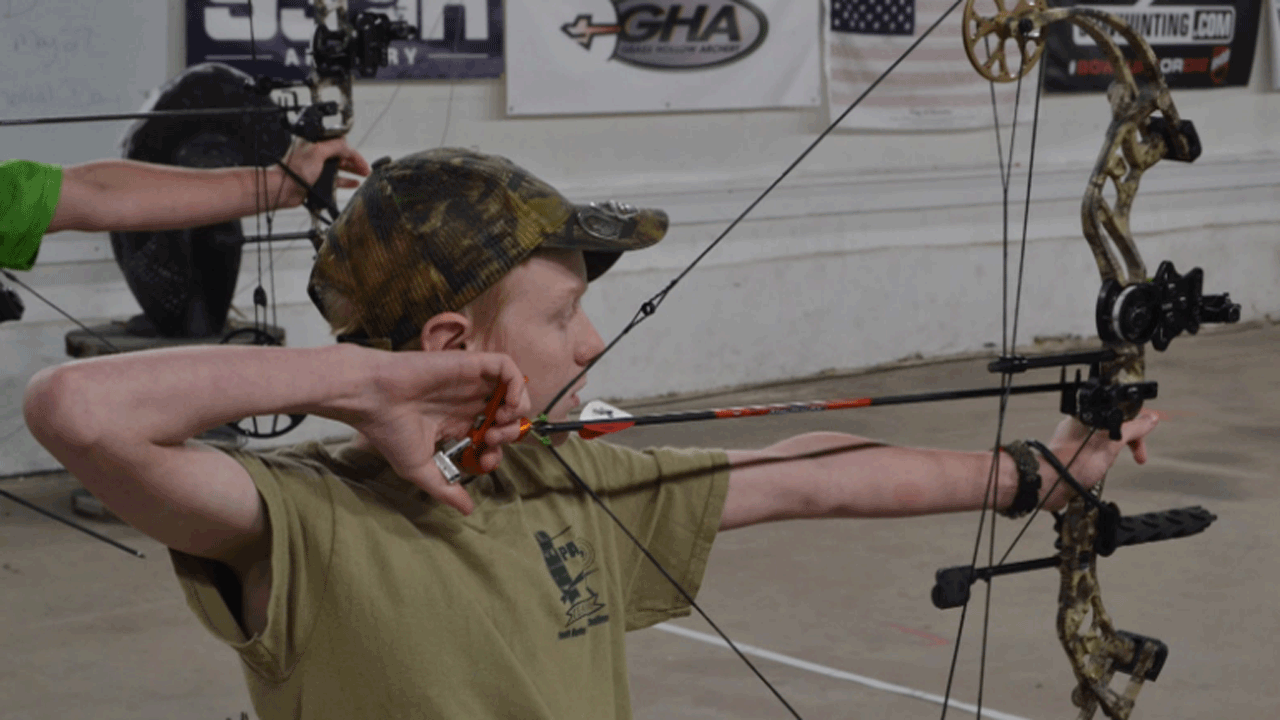
The Transfer to Hold step is one that is often overlooked in our shot sequence.
My recommendation is to approach your shot process with the same enthusiasm and attention as you do your equipment. The vast majority of the best competitors are also bowhunters and their shot process does not change from one to the other. The only documented and heavily researched training that is available to compound archery is the USA Archery National Training System for Compound Archery. The holding position guide below is from the NTSC and is the first step in helping you manage target panic.
Steps That Can Help Eliminate Target Panic
- Make sure your equipment fits and form is as close to the biomechanically optimum position as possible.
- Concentrate on relaxing both bow arm, grip, and release hand/arm at full draw. It all starts with proper hand position.
- Ensure that your thumb is wrapped around the peg of the thumb button or index finger is wrapped around the trigger while aiming. Typically 3-5 seconds while at full draw. There should be no visible movement of your thumb/index while executing the shot.
- Concentrate on contracting your back muscles to execute the shot. Squeeze your shoulder blades together. However, if you don’t have #1 on point, this step becomes next to impossible to complete.
- Shoot blind bale. (3 to 5 yards with eyes closed after anchor is achieved, concentrating on feeling the shot with each arrow) This is where you become familiar with the subconscious feeling of an accurate archery shot.
- Do holding drills during practice. Draw your bow, anchor and say to yourself “thumb/index finger on and relax” and then aim (count 3-5 seconds to yourself) and then repeat “thumb off and let down”
- Take up tournament shooting to increase your accuracy under pressure. It also gives you goal driven off season practice to improve accuracy.
- Start a shooting program with drills to keep target panic at bay.
- Shoot more and more blind bale.
- Seek out a coach who has experience working with shooters that have target panic.
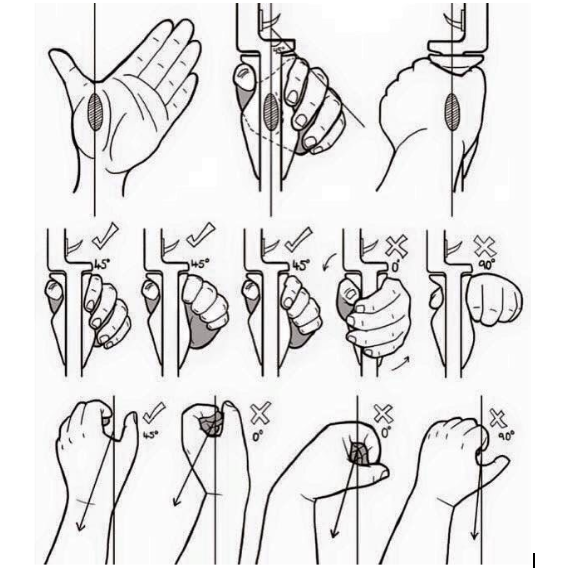
Here’s a look at proper hand placement on the bow grip.
When Johnny Herrmann struggled, the first thing we did was a video analysis to look at where his body position was as far as fit and form of his equipment, location of anchor, and process of shooting. We found that his draw length was off, he was moving excessively into his anchor, and likewise doing all kinds of extra “things” in order to get his shot off. We were able to identify these by working remotely. He took videos from specific angles and sent them to me. I was able to compile the videos, edit them, and send them back to help him understand where he needed to make changes.
For anyone who isn’t able to get through target panic on their own and needs that extra feedback or help, please email [email protected] and we can easily set you up with a video analysis to help get you over the hump of target panic.

 By
By 